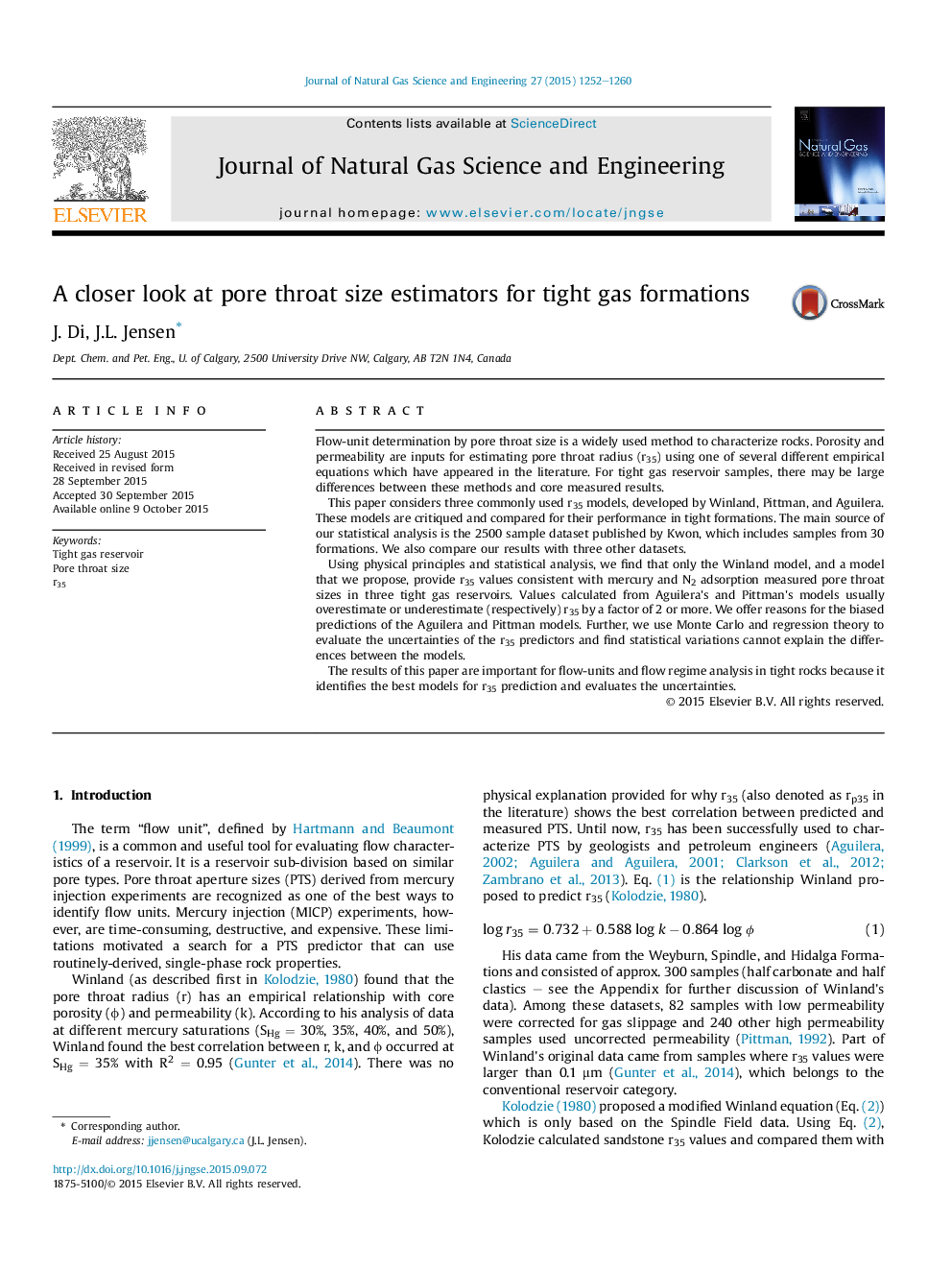| کد مقاله | کد نشریه | سال انتشار | مقاله انگلیسی | نسخه تمام متن |
|---|---|---|---|---|
| 1757673 | 1019129 | 2015 | 9 صفحه PDF | دانلود رایگان |
• Three common pore throat radius (PTS) model r35s are critiqued and compared in tight gas formations.
• Based on more than 2000 samples by Kwon, a new simple and semi-empirical r35 model is proposed and works well in tight rock.
• In tight rocks, Aguilera's and Pittman's r35 models over- or under-estimate PTS by factor of 2, respectively.
• The effects of uncertainties in contact angle and interfacial tension on PTS prediction are within ±20%.
Flow-unit determination by pore throat size is a widely used method to characterize rocks. Porosity and permeability are inputs for estimating pore throat radius (r35) using one of several different empirical equations which have appeared in the literature. For tight gas reservoir samples, there may be large differences between these methods and core measured results.This paper considers three commonly used r35 models, developed by Winland, Pittman, and Aguilera. These models are critiqued and compared for their performance in tight formations. The main source of our statistical analysis is the 2500 sample dataset published by Kwon, which includes samples from 30 formations. We also compare our results with three other datasets.Using physical principles and statistical analysis, we find that only the Winland model, and a model that we propose, provide r35 values consistent with mercury and N2 adsorption measured pore throat sizes in three tight gas reservoirs. Values calculated from Aguilera's and Pittman's models usually overestimate or underestimate (respectively) r35 by a factor of 2 or more. We offer reasons for the biased predictions of the Aguilera and Pittman models. Further, we use Monte Carlo and regression theory to evaluate the uncertainties of the r35 predictors and find statistical variations cannot explain the differences between the models.The results of this paper are important for flow-units and flow regime analysis in tight rocks because it identifies the best models for r35 prediction and evaluates the uncertainties.
Journal: Journal of Natural Gas Science and Engineering - Volume 27, Part 2, November 2015, Pages 1252–1260
